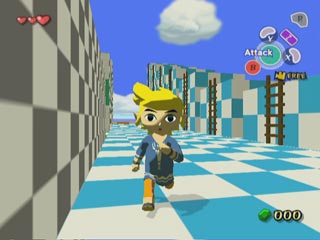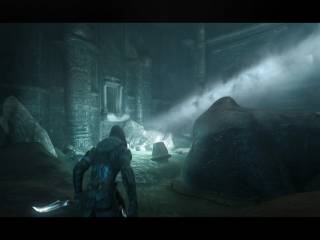The Electronic Universe of Language and Culture Pt. 1
A manifesto for games as art
My friend Zach and I have been thinking of a gamer's manifesto for some time now. The main aim of this writing is to show how games and literature are related. By doing so we may argue that literature and computer science are not exclusive to each other. It would be great to have a course in Literature and Computer science, agreed? Anyway...for 2009, this is our project. Hopefully every month we'd have something new for you!
I. Introduction
It came in a dream one Sunday morning; it was the theory of language’s relationship to art. I found a meaning in my dream, although Freud might say differently. There I was, Teetering on the edge of a mental cliff, afraid to jump to the next plateau to reach the door of my subconscious. Although literary scholars would argue that Freud’s subconscious is impenetrable, I argue that the subconscious is but only the final watchmen over the inspiration found in every human mind, art being the foremost.
As a first gate, a door to the garden of meaning, art is the first gate of human society and culture that must be kept in working order to be useful. While the gate metaphor of art equates representative arts like painting, sculpting, and music, art at the very best of interpretations is subjective and that’s the beauty of the practice, for art is a practice. The technique to handle a brush is just that, a technique. The artist, by the very definition, is a person who possesses the ability to turn the subconscious into a traitor and thus reveal the secrets of meaning in the human mind. It takes months, years, and centuries of practice in order to perfect any given number of artistic interpretations. Whether one is to study the appeal of a painting, the meaning of a text, or what a limerick’s tone does for the human spirit—if one believes in such things—a person who considers the arts as the first door into meaning, practices. This practice, writing, painting, or playing music, produces feelings, emotions, or even nostalgia. Art could serve the purposes of historical accounts, passing on of legends, or even contribute to theological discussions. An artist, to be successful, must not only open the door to meaning, but do it in such a way that his or her idea can be accepted by the society of their origin.

Art has been reduced to the sum of its parts and art theory uses math and sciences in order to judge what is appealing, and therefore most profitable to the artist. Good art has been examined for the proportions of Pythagoras, and the proportional art has been marked as purely a science by the mathematicians, thus loosing the literary significance that literary theory can have on physical, representative art.


The first location in thought to begin discussing the relationship of literature (i.e. language, art, writing, music) to that of computers and electronics is in the power that literature possesses within itself; to first define what literature can do. The second phase, describing how computer science is similar in scope and power, as well as demonstrate how technology borrows from the concepts of literature. The third is to put the belief into practice, participating in the unlocking of meaning. Art and technology are inseparable, thus critical theory and technology are also inseparable.
Were the electronic worlds we have created only the compilation of 1's and 0's and the rigorous use of scientific logic, would they be as popular as they are? Certainly not. It is unwise to view our new electronic world without the consideration of the art and integration of past mediums. There was a time when film was merely the product of clever engineering, but now, certainly, one may look and see the exquisite artistry involved in a movie. In the same way, video games serve a similar purpose and must be analyzed as a legitimate art in order for us to fully understand its role in our lives.
It is said that humans are the only beings that tell stories to each other. For such a unique characteristic, we should be intensely interested in everything involved in it. Consider the first story told - the person who first drew a scene in his story and invented drawing and painting, the person who first reenacted his story inventing drama. In light of these developments, to ignore the role that new technologies, that video games and other electronic worlds, play is to miss out on one of the most dramatic evolutions in the way humans tell stories and in the very way we view our lives.
All art is the illustration (whether 2D, 3D, or otherwise) of a view. A view entails many things and can be seen in art throughout history. For the Medieval artists, cycle is a central theme, with people in the stories always filling their role, doing their part, and contributing to the vast divine cycle of life. For Modernist artists in the early 20th Century, their art is filled with a view of progress, of continual newness, and of a great revolutionary scattering of traditional consciousness. In the same way that print revolutionized the Renaissence world and the way that film revolutionized the modern consciousness, video games and our new electronic media are rapidly and dramatically changing our artistic view. To ignore this new artistic view, to forego a critical analysis of these new media because they are not as high and noble and artistic as the critics think they should be, is the lowest form of idiocy.
Log in to comment